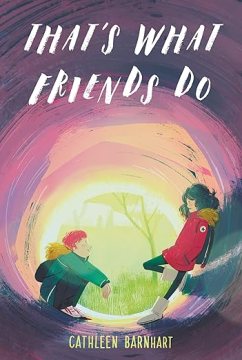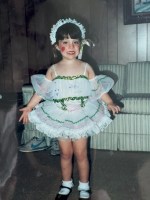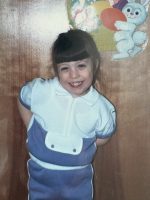We are thrilled to welcome Courtney Stevenson to the Editor/Agent Spotlight on The Mixed-up Files of Middle Grade Authors today.
 Courtney is an Editor with Quill Tree Books, an imprint of HarperCollins.
Courtney is an Editor with Quill Tree Books, an imprint of HarperCollins.
She has been with HarperCollins since 2016, when she joined as an assistant to Rosemay Brosnan and dove right in working with Rosmary’s incredible list of authors, such as National Book Award-winning Elizabeth Acevedo (The Poet X), Newberry honor author Gail Carson Levine (Ogre Enchanted), and American Indian Youth Literature Award-winning author Christine Day (I Can Make This Promise).
In building her own list, Courtney is focused mainly on MG and YA, including That’s What Friends Do by Cathleen Barnhart,
Dinner at the Brake Fast by Renee Beauregard Lute, and Money Out Loud by Berna Anat. She has “a particular interest in clever humor, family dynamics, historical stories and settings not seen enough”, as well as “the occasional pop nonfiction, and writing that pulls me along to the next page.” Check out her wish list and submission guidelines here.
Speaking of historical stories, Pura Belpré Medalist (Efrén Divided) Ernesto Cisneros’ Queso, Just in Time, will release with Quill Tree on March 10, 2026.
Welcome to the blog, Courtney. We’re excited to learn about your editorial journey. Congratulations on your work with Rosemary Brosnan and cheers to your own projects! How did you initially discover these authors?
CS: Thanks! It was such a dream to work with Rosemary on her amazing list of titles—she really is the GOAT, and has been an invaluable mentor for me. (Also, I wish I could go back in time and tell little Courtney that she’d one day be regularly emailing the author of Ella Enchanted!)
My own list has grown mostly through submissions from agents—they are the real discoverers, and I’m so, so glad to have ended up on sub lists for these projects. It’s the most magical feeling to read the first few pages of a submission and feel like I have fireworks going off in my brain, or a big cheer of I want this one!
“Chock-full of hooks…”
We notice you are drawn to a strong hook. Can you give us an example from one of your Quill Tree acquisitions?
 CS: I do love a strong hook, a detail or premise that will make the reader sit up straight and pay attention. Best when paired with the feeling that they’ve found a friend for the next ~300 pages!
CS: I do love a strong hook, a detail or premise that will make the reader sit up straight and pay attention. Best when paired with the feeling that they’ve found a friend for the next ~300 pages!
Dinner at the Brake Fast is chock-full of hooks: the setting of a family-run truck-stop diner (and all the good food descriptions), the promise of a ROAD TRIP HEIST to SEEK JUSTICE, and the mismatched group of characters that comes to support each other. It’s a fun adventure story with a heartwarming center, plus a perfect middle grade voice that snags you from the moment you meet Tacoma. Each of those details serves as a friend who invites you to come along for the ride.
Speaking of Hooks
As for your latest projects, we’re hoping you can share a little about the NEW mg novel from Pura Belpré author Ernesto Cisneros, Queso, Just in Time, coming March 2026.
CS: I’m so excited for folks to read this book! I’ve been a fan of Ernesto’s books since Efrén Divided, and I was thrilled to start working with him one-on-one when I started to build my own list. As a lover of both historical fiction and family stories, I was hooked on this novel from the very start.
Protagonist Queso wishes that he could see his father again after he passes—and ends up back in 1985 with twelve-year-old Pancho, the boy who will grow up to be his dad. Between navigating an analog world and helping Pancho build up his confidence, Queso is in for quite a time. This novel has Ernesto’s signature blend of humor and heart, and highlights themes that are just as topical in 2025 as in 1985.
From Agent to Editor
We understand that your kidlit career path started on the agency side. How did you come to switch to the editorial side?
CS: I had my heart set on being a children’s book editor from the time I first started thinking about a career path—but after I graduated college, I was ready to work any publishing job that would have me!
I feel so lucky to have landed at Pippin Properties as my first publishing job. Sitting at that assistant desk gave me a holistic view of the industry—everything from subrights, audio, contracts, and art—along with the opportunity to work closely with authors and creators, form relationships, and develop books from the earliest stages.
After a few years of learning on that side of the business, I still felt that editorial would be the best fit for me. The timing was perfect since Rosemary was looking for an assistant right when it was time for me to make a move. I gained so much experience in both of those early roles.
Are there any other upcoming titles/current projects you are excited about?
CS: So many books I wish I could share with readers right now!
Jess Hannigan’s next picture book, The Cow in the Dark at Night, makes me laugh each time I read it.
I’m currently in edits on The Girl in Green, a new horror YA novel by Laura Creedle slated for Fall 2026 that is the perfect amount of terrifying.
I’ve ended up with more illustrated nonfiction projects on my list than I had expected—with topics ranging from aliens and linguistics to spies and icons—and I can’t wait to see each one hit shelves. And of course, I’m very excited to be working on a new novel from superhero Ernesto Cisneros! 😊

What a gorgeous cover!
BONUS Editor Lightning Round:
- Query/Pitch pet peeve __Word count over 100k_______
- Please don’t send me ___High fantasy
- Title on your TBR pile __Pasta Girls by Taylor Tracy___
- PB you could probably recite by heart ___Many Moons by James Thurber (I actually have nearly recited this book to many unsuspecting friends!)____________
- Favorite line from a mg or YA novel__Two that come to mind: The gut-punch from Code Name Verity of “Kiss me, Hardy!” (sob) and the unforgettable first line of Feed: “We went to the moon to have fun, but the moon turned out to completely suck.” One more for good measure: “Corpus bones! I utterly loathe my life” from Catherine, Called Birdy.
Thank you, Courtney, for joining us on The Mixed-up Files of Middle Grade Authors today!
While she is no longer on social media (She misses Book Twitter like we do!)
you can learn more about her at the wish list link above.









